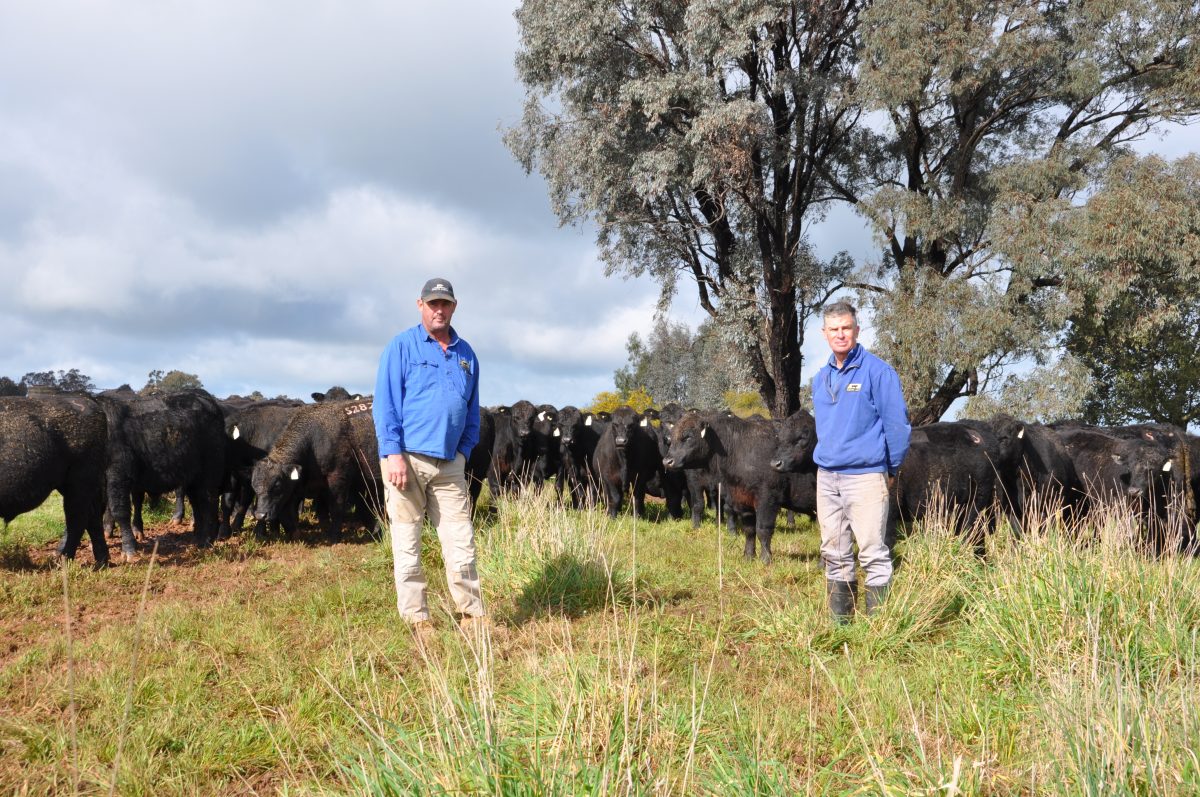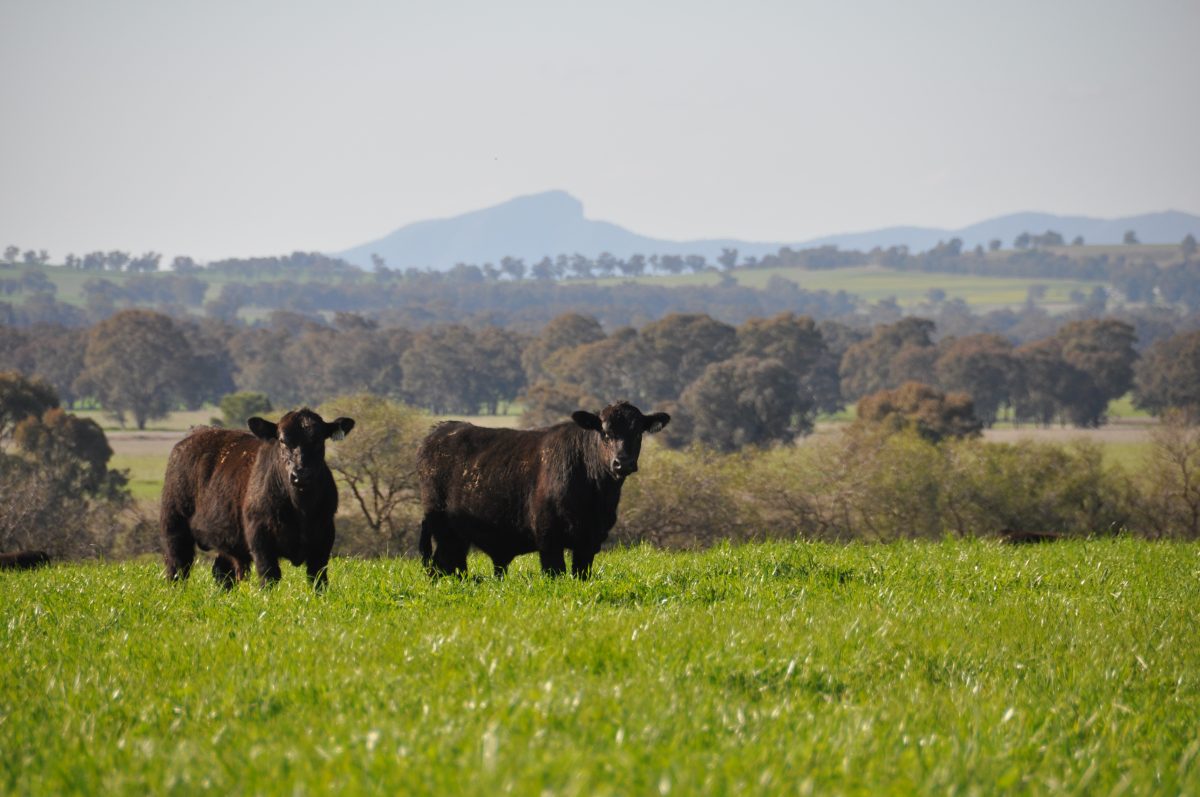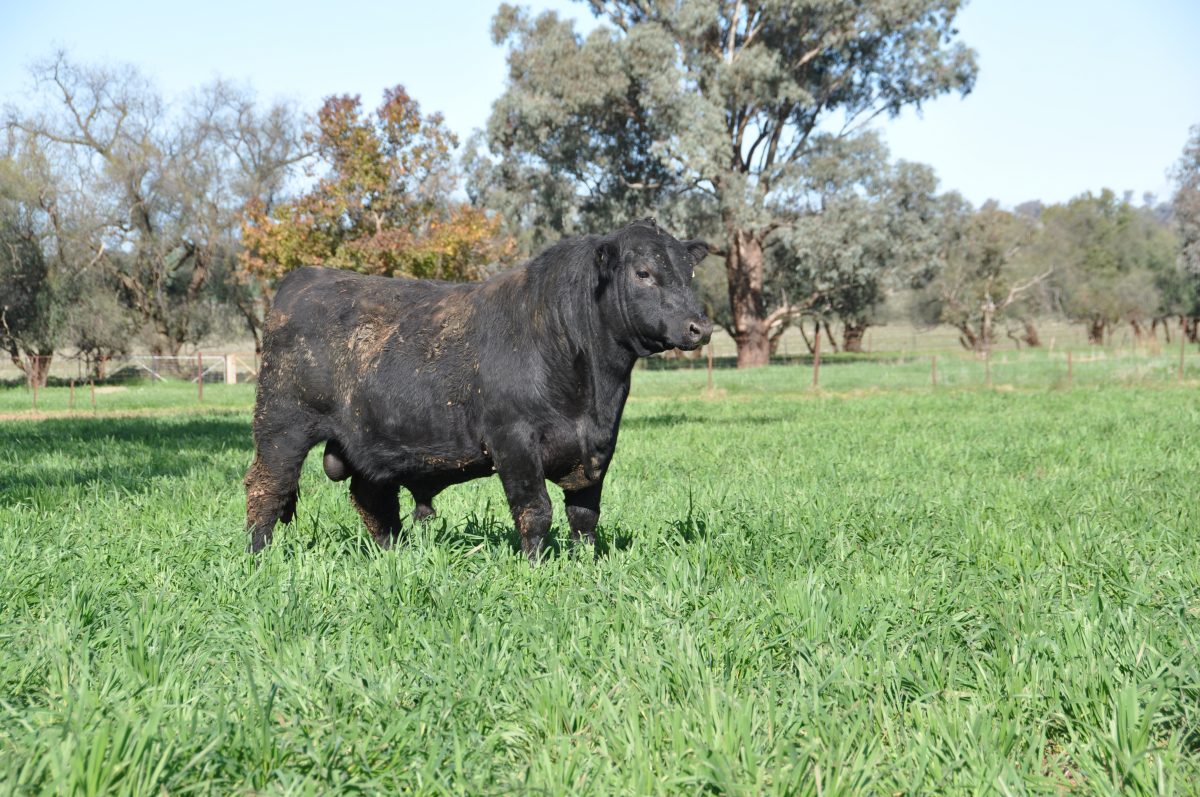
The Scotts Angus herd is based on the property Glen Elgin, near Henty. Pictured are Neale Terlich and Steven Scott with a mob of 2022 yearling bulls. Photo: Cindy Scott, Scotts Angus.
There are some key drivers behind successful beef production, according to Henty cattle farmer Steven Scott from Scotts Angus.
Breeding animals with good temperament and calving ease are two of the non-negotiables. The other is ensuring you have your stocking rates right and are maximising the consumption and regrowth of that invaluable and harvestable product – grass.
“In a beef system, you want to, one, grow as much grass as you can, two, turn that grass into as much red meat as you can and, three, sell all that red meat for as much money as you can,” said Steven.
“That all sounds simple and easy but number one and number three you have little to some control over, however, it’s number two where you have the most control.”
The Angus breed made headlines recently with the record-breaking sale of an Angus bull for $360,000, making it the most expensive bull sold in Australia.
Steven says it’s great publicity for the breed and a talking point that reminds people of the demand for Angus genetics.
“It shows a lot of enthusiasm, demand and buoyancy in the market,” he said.
“It indicates there is a lot of money and confidence – in the beef industry in general, and Angus in particular.”

The two focus areas of bull selection at Scotts Angus are temperament and calving ease, which are the non-negotiables, says Steven Scott. Photo: Cindy Scott, Scotts Angus.
It’s good news for producers like the Scotts. They have been selling bulls since 1956 and to be still going strong after 60 years means they are getting it right.
In addition to a cropping program, Scotts Angus runs 1000-plus cows on its 2380-hectare operation. The Angus herd is on the property Glen Elgin, 20 km west of Henty.
Just as their cropping neighbours change the height of their header front to make sure they maximise their return, the Scotts aim to get the right number of mouths out into the paddocks.
They work on the basis that profitability can be broken down into segments, with 5 per cent determined by carcase traits, 10 percent on growth rates, 25 per cent on fertility and 55 per cent by the stocking rate.
“What we do, and encourage our clients to do, is focus on their operation proportionally to those brackets,” Steven explained.
“One of the best ways to do that is run your cattle in big mobs and move them fairly regularly.”
Over the years, Scotts Angus has worked closely with advisers and consultants using various scenarios of different stocking rates and say the amount of money that can be made, or forgone, by not getting your stocking rates where they should be – and matching that with your pasture production – is quite significant.
The Scotts will move a mob of 100-150 cows or 200-500 weaners once or twice a week depending on the paddock size.
“There is a labour cost to all that and to make that easier the two areas of bull selection we focus on are temperament and calving ease,” said Steven.
“When you’ve got big numbers, you’ve got big weight in your paddocks and you don’t want unpredictability.
“You want your animal to walk, eat and ruminate and you want them to do it in a slow and controlled manner, you don’t want some idiot out the front that pricks their ears and runs and then takes 20 or 30 followers with it.
“In addition, you want your cow and calf, post-calving, to be back up on their feet, re-engaged with the rest of the herd as quickly as possible so that they can continue the rotation of paddocks.”

When clients visit Scotts Angus, they spend considerable time talking about the Scotts’ methods and what they are trying to achieve in their own operations. Photo: Cindy Scott, Scotts Angus.
Scotts Angus sells by private treaty year-round and offers about 230 bulls and 150 heifers for sale annually.
“When we spend time with our clients in the yards, we discuss all that with them and we try and reinforce what the profit drivers are and where they should be focusing,” said Steven.
“Those are the areas we really try and concentrate on because the stocking rate is the low-hanging fruit.
“We encourage our clients to keep in mind that if only 5 per cent of your profitability is determined by carcase traits, you shouldn’t be spending 20 per cent of time or your cost focusing on that – that’s not picking the low-hanging fruit.”
The Scotts focus heavily on developing a relationship with their clients.
“Long-term relationships are important to us and many of these have been developed over two or three generations.
“When they visit us, they have as much time as they need to view what is for sale, to ask questions about our operation, and to talk about what they are hoping to achieve.
“People come here to buy a bull, but they actually walk away with a well-tested program. We sometimes joke that the bull is almost like a bonus,” he laughed.
Original Article published by Vanessa Hayden on Region Riverina.







